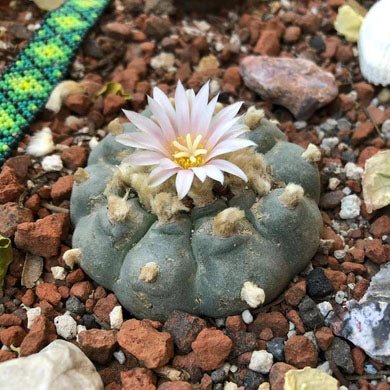The Divine Luminous "Jícuri"

The Divine Luminous "Jícuri"
Peyote(Lophophora williamsii) is divine luminous, hicouri or jculi in the Huichol territory, or huatari among the Coras, or kamaba for the Tepehuanes, péyotl in Nahua (Cárdenas de la Peña, 1988). Peyote is one of the Mexican plants whose use and popularity have crossed national borders, due to its known hallucinogenic properties, the existence of this cactus is one of the main reasons why the region is visited by national and foreign tourists (INE, 1994). Miraculous properties have been attributed to it, its chemical and medicinal qualities are studied in different parts of the world (Ramírez, 1994). Commonly called peyote, it is one of the best known hallucinogenic plants, which for centuries has been used by some ethnic groups such as the Tarahumara and the Huichol as medicine and in religious ceremonies and to induce visions (Bravo, 1978; Alcántara, 1991; cited by Montiel and Alcántara, 1997). These groups from then to the present day made annual pilgrimages to the area during which they collect and consume peyote (INE, 1994). According to the Huichol tradition, for peyote to produce the effects that are sought in it, it is necessary that each person who is going to consume it feels clean and in harmony with their body; In order to achieve both states, a meeting is held in which the shaman confesses to all the peyoteros; These, for their part, are (and feel) obliged to speak the whole truth out loud, especially when it comes to sexual sins. According to the Huichol belief, anyone who does not act in accordance with these norms will face various dangers when ingesting the hallucinogen (Revista de Geografía Universal, 1979). Recently, the Ministry of Social Development in Mexico declared to L. williamsii as a species subject to protection (Montiel and Alcántara, 1997).



